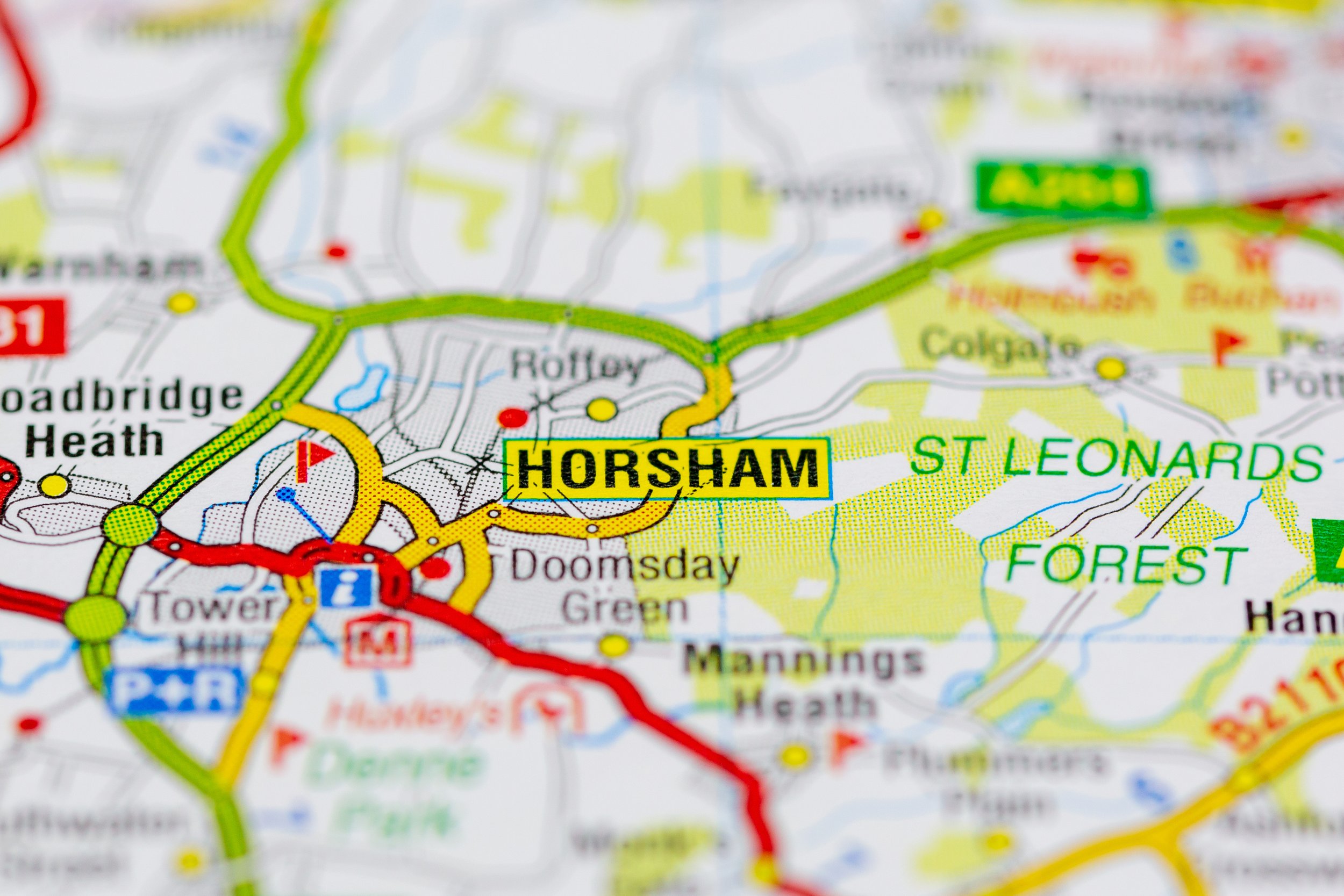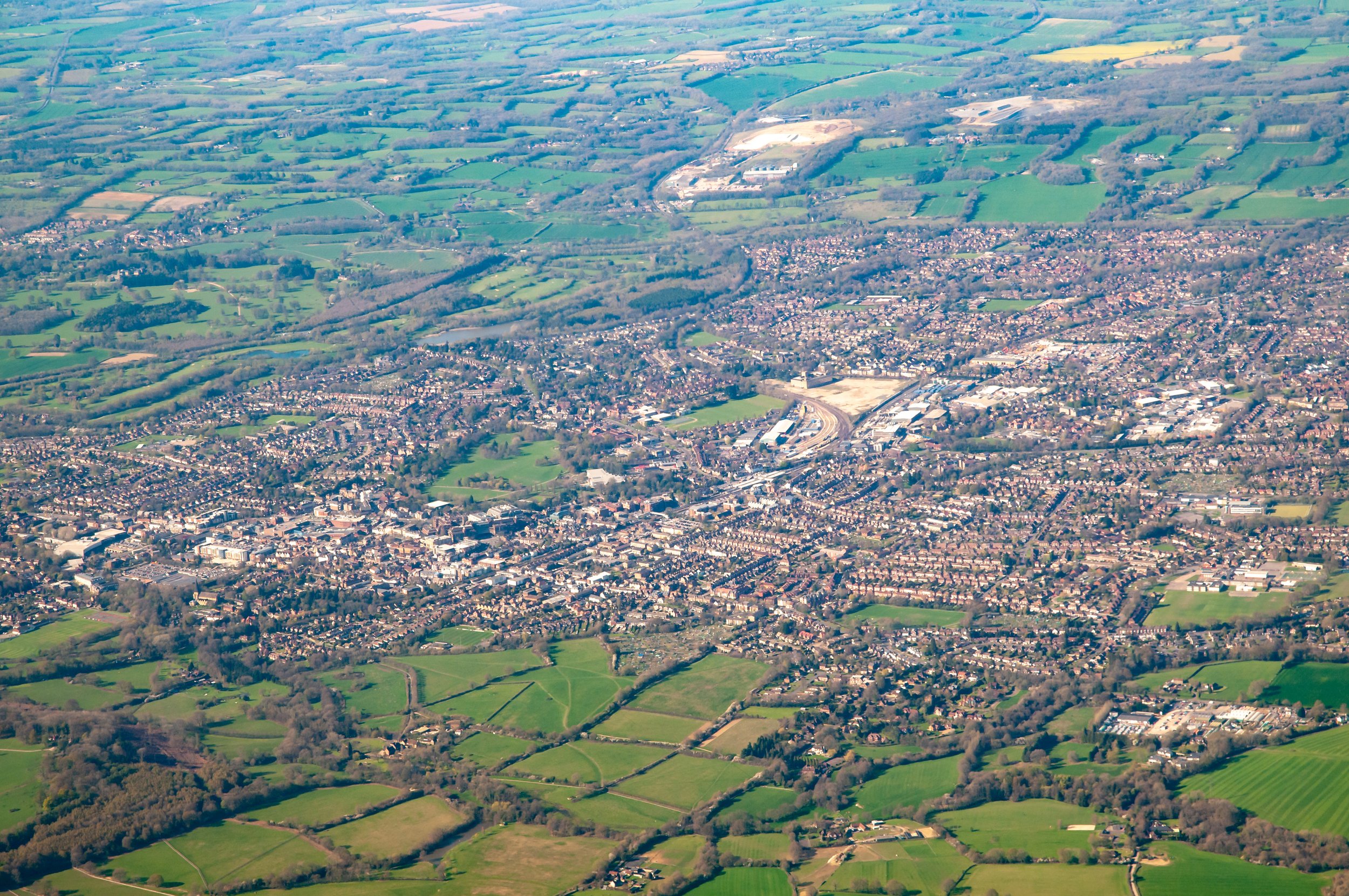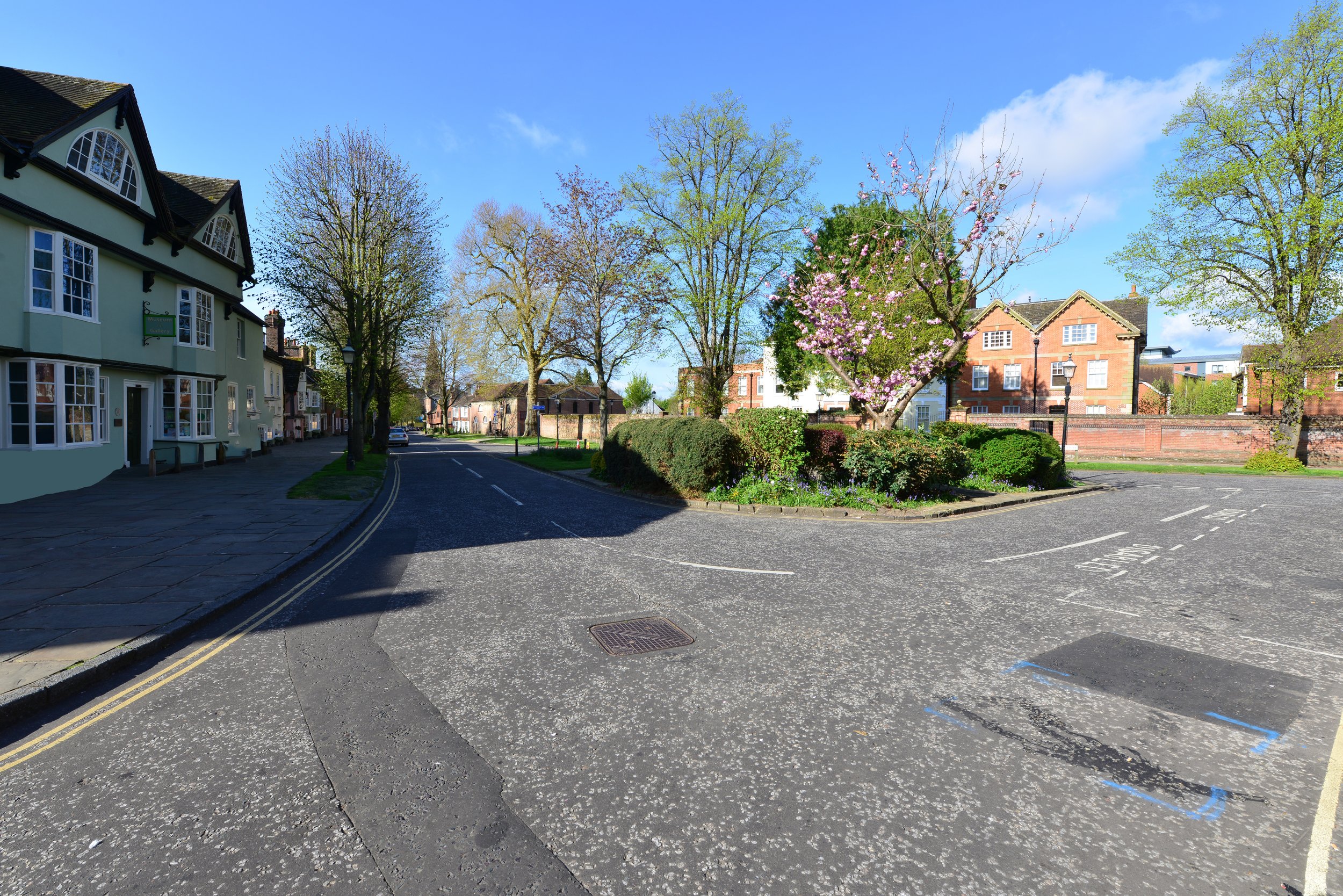Why Horsham for Property Investment
We’ll shortly be announcing the launch of a new development in Horsham, West Sussex. As a result, we felt that now would be a good opportunity to illustrate the investment appeal of this historic market town.
Looking first at its location, it’s a town that affords excellent access to three key regions. One is the South Coast and all its many seaside resorts, many of which are just a short drive away. Another is the High Weald Area of Outstanding Natural Beauty, a rural expanse that’s rich in heritage and stunning landscapes, and a popular getaway for millions of outdoor enthusiasts every year. The third, of course, is London.
However, there is much more to the town than just being a convenient base for travelling elsewhere. When investors look for signs of a promising market, they will typically consider factors such as population growth, employment growth, and growth in the local economy more generally. On all these counts and more, Horsham is looking exceedingly strong.
Demand for Local Property
Wherever and whenever it occurs, a growing population will typically translate into rising demand on the part of home-buyers and respective tenants. Both are important to investors. Competition amongst buyers will tend to push up capital values, while competition amongst tenants will tend to support higher rents.
In Horsham, demand for property has been boosted by several factors:
· Growth in the domestic population
· An ageing demographic
· Rising employment
· Inward migration from London
· A thriving ‘staycation’ market
Population Growth:
Looking first at the general population, Horsham is a town that has been delivering exceptional growth. Back in November 2020, the Horsham district of Broadbridge Heath made headlines when it recorded an upturn of +79.1% against its 2013 population baseline.
Similarly, the Horsham districts of Rusper and Colgate saw the local population increase by +39% between 2013 and 2019. Over the same period, resident numbers rose by +19.7% in yet another Horsham community: the district of Denne. (Source: ONS / Sussex Express.)
These figures are far in excess of the average rate of population growth in the UK, and compare with growth of just +4.57% across the whole of West Sussex. Moreover, they were recorded before the ‘London Exodus’ began to take effect.
A report published on the West Sussex Joint Strategic Needs Assessment (JSNA) website notes that the local population is expected to grow by +7.9% over the next ten years and by +14.6% over the next two decades.
Demographic Changes
The JSNA website report is based on ONS data, which predicts some significant demographic changes in Horsham and across the wider district.
It concludes that “higher percentage increases are expected in older age groups, specifically persons aged 65-84 years (+23.0% by 2026, and +43.4% by 2036).” It also predicts that the number of residents aged 85 years or above will rise even faster: +33.8% by 2026, and a staggering +122.5% by 2036. In short, “the population of those aged 85 or above is expected to more than double by 2036 in Horsham and Mid Sussex.”
In practical terms, that would mean that between 2026 and 2036, the town and its surrounding areas would see an influx of an extra +15,600 people, all needing homes either to buy or rent. Between now and 2036, that number would, of course, be higher still.
For investors, these demographic shifts imply a likely change in demand for different property types, as well as a rise in sheer numbers. Family homes will still be needed – the population in these age groups is set to rise here too – but the biggest growth in demand could well focus upon smaller apartments; those more suitable for downsizers and retirees who want to live in more compact and more manageable homes.
Aerial view of Horsham
Rising Employment
Of course, such rapid growth in resident numbers cannot be explained solely by people living longer. Another important force has been a steady growth in job numbers.
This has partly resulted from some very impressive inward investment and regeneration projects. We’ll look at some of these projects later because they have other consequences for investors besides buoying up demand. For now, though, it’s enough to recognise that employment has been rising rapidly and it looks set to continue on its upward trend.
An employment report produced for Horsham District Council in November 2020 predicts that “total workforce job growth will be +5,835 by 2036, “equivalent to 343 jobs per annum.” Additionally, the authors forecast “B class job growth of +1,725, equivalent to 101 jobs per annum.”
On the face of it, these numbers may not sound especially striking but it’s important to bear in mind the small size of the town. New employment often means many more people migrating into the neighbourhood, and hundreds of new jobs every year will undoubtedly add to pressure on an already under-supplied housing market.
Inward Migration from London
It’s no great secret that the Covid pandemic prompted millions of people to reappraise their living arrangements and, in many cases, to relocate from busy cities to quieter rural and suburban communities.
London saw one of the most pronounced outward movements. In December, The Times reported findings by the estate agency Hamptons, showing that “more than 90,000 Londoners quit the capital this year, the largest exodus for at least a generation.” The article goes on to record that “a further 21,000 Londoners bought a second home, or a buy-to-let property, outside the M25.”
Many of these residents moved to towns and villages in London’s broader commuter belt or, in other cases, to popular tourist destinations. Devon and Cornwall saw some of the sharpest rises in demand in 2020, although in 2021, the pattern was more chequered. What is indisputable is that many parts of southern England saw an influx of house-hunters, and values inevitably rose.
Horsham was one such beneficiary, partly because it has a ‘best of both worlds’ location. On the one hand, road and rail connections mean that it’s only an hour’s commute into the capital, so it’s firmly within commuting range. On the other hand, as we’ll discuss shortly, it’s also set amidst some beautiful countryside, surrounded by popular tourist haunts: national parks, areas of outstanding natural beauty, historic sites and, of course, a long stretch of England’s South Coast.
Accordingly, the town has become a popular destination for commuters – in fact, it can be regarded the country’s top commuter location for London, if recent reports are anything to go by. Analysis of rail travel data in July last year found that Horsham had seen a +234% rise in the number of commuter journeys to the City of London.
Knepp Castle
The Tourist Market
We’ll conclude this section by looking at another very significant source of demand for accommodation. Tourism is a huge industry in West Sussex, with an estimated economic value of over £2 billion per annum. According to Coast to Capital, the area attracts 24.4 million visitors annually (2018 data) and of those, around 2.7 million stay for more than one day, accounting for 11 million bed-nights overall, and expenditure of around £600 million.
Numbers fell during the pandemic lockdowns but in the open periods, staycations boomed, and England’s South Coast was one of the country’s most immediate beneficiaries. Bookings rocketed, as did average prices, and the signs now are that the staycation trend has become engrained in the British psyche.
Just this week, the tourist accommodation specialist Sykes Cottage Holidays published research showing that early bookings in 2022 were up +158% against the same period last year. Of course, that’s measuring against an artificially low baseline, considering the effects of the pandemic, but even against 2020’s figures, bookings are reportedly +22% higher. Moreover, the rising popularity of holiday homes has prompted a sharp upturn in investor revenues. According to Sykes, “holiday homeowners earned, on average, £28,000 annually per property last year, compared with almost £21,000 in 2019.”
Horsham is located just 26km (16 miles) from the coast, and yet it’s also right on the western edge of the High Weald AONB, so it’s easy to see why owners of local short-stay property stand to do very well this year.
Most UK domestic tourists visit holiday accommodation in their own vehicles, which means they can easily drive to local attractions. Consequently, an inland base often makes a better choice, especially for couples and young families, because it offers many more options with which to respond to Britain’s changeable weather. Consider Horsham’s proximity to key tourist destinations:
The High Weald AONB 1.8km
Warnham Local Nature Reserve 2km
Hannah Peschar Sculpture Garden 9km
The Surrey Hills AONB 15km
South Downs National Park 15km
Worthing 27km
Hove 28km
Brighton (centre) 29km
Bognor Regis 38km
Newhaven 39km
Royal Tunbridge Wells 40km
Central London 50km
Eastbourne 53km
Horsham puts holidaymakers comfortably in range of all these destinations and more. With short-stay rentals commanding much higher prices than conventional AST-lets, there’s clearly a strong commercial argument for investing in properties that can at least have a dual use – either as traditional residential homes or as self-catering holiday-lets / serviced accommodation.
Housing Supply in Horsham
Housing supply across West Sussex is a contentious issue. Much of the county’s land is protected, thanks to the status of its nature reserves, country parks, AONBs and so on, and many districts rely on their scenic charm for their visitor appeal. As a result, planning constraints have greatly limited the supply of land available for development, and several districts have been falling well behind on their house-building targets.
The West Sussex Housing Supply and Delivery Report 2021 notes that three nearby districts – Adur, Arun and Worthing – are failing to meet targets, and that several others, including Horsham, are operating with local housing plans that are out of date.
In October 2021, the Sussex Express reported that Horsham District Council’s housing strategy had been delayed by a need to respond to new government planning guidance, and that “a current lack of a five-year housing land supply is already causing (the) council to lose significant planning appeals.”
Looking back at the council’s Strategic Housing and Economic Land Availability Assessment 2018, (published in January 2019) local planners were predicting the construction of 11,463 new homes by 2033. This, however, was before supply chain restrictions and the Covid pandemic caused construction rates to falter, and before more recent planning constraints were factored in. But even if all those homes are ultimately built, they’re likely to fall well short of local needs.
Going back to those earlier population projections, it’s clear that the local rate of growth has been far higher than the county average, and that total demand for housing is likely to remain far greater than the supply of properties available. Even before considering the effects of tourism and a fast-growing economy, that’s a recipe for intense demand and a highly rewarding rental market.
Local Economic Factors
Located just 26km (16 miles) south of the M25, and only 15km (9 miles) from Gatwick Airport, Horsham is a very well-connected location for businesses. London is only an hour away by rail and the busy ports of Southampton, Portsmouth, Folkestone and Dover are all within easy driving distance. No surprise, then, that many successful businesses have made it their home. An estimated 8,000 small and medium-sized businesses have their bases here, and numerous large and well-known brands have also made major investments in the town.
To accommodate business growth and job-creation, planners have established over 30 industrial and commercial estates in and around Horsham, and work is well under way with a number of important regeneration projects.
One of these is Piries Place, a £35 million town-centre redevelopment scheme that has created new retail and leisure amenities, including restaurants, new parking facilities and a 3-screen cinema.
Another is the £190 million Horsham Enterprise Park, a project that is now under way and expected to generate up to 25,000 square metres of employment space. Muse Developments was appointed in March 2021 to lead the scheme, which is scheduled to continue until 2027. It will ultimately house offices, R&D facilities and an enterprise hub.
These developments are important because they will support the ongoing increase in job numbers, and their focus on more professional, technical and scientific roles should help to underpin growth in average earnings. Real incomes tend to be closely tied to average property values so, at a time when inflation and rising taxes are eroding ordinary people’s spending power, this kind of investment should protect the local property market against some of the UK’s worst economic headwinds.
Horsham District Council’s Northern West Sussex Economic Growth Assessment (November 2020) remarks on this growing trend towards the professionalisation of its local workforce. It expects to see growth (+14.1%) in technical and office-based roles, but a decline in lower-value manufacturing jobs. Overall, by 2037, it expects the number of employed people in Horsham to rise by +7.5%.
According to a 2020 forecast by Oxford Economics, the town’s fastest employment growth will be seen in the health sector (+24.2%), in administration and business support (+24.0%), and in professional, scientific and technical activities (+16.3%). Growth is also predicted in the education, construction, arts and recreation sectors.
Horsham’s Property Market – a Summary
All of the above-listed factors augur well for property investment in Horsham. Demand for property (both residential and tourist) is strong and rising, thanks to a host of different drivers. Conversely, supply is limited. And importantly, none of these forces looks set to change any time soon; all else being equal, local market conditions should remain favourable for at least the next ten or twenty years. Consequently, the town should continue to produce good returns – both capital and rental – over the medium and longer terms.
To put that in context, Horsham is a town that has significantly outperformed regional averages over recent months when it comes to house price growth. According to Land Registry figures published last month (January 2022), average values rose by +£59,000 in the 12 months to November. Looking at the longer-term pattern, that equates to annual growth of +15.8%. That’s well ahead of the UK norm, which ONS estimates at around +10%.
Average values in Horsham:
· Detached £721,360
· Semi-detached 441,098
· Terraced £344,270
· Flats £210,465
It’s clear from these prices that Horsham is not one of the country’s more affordable markets, but all its property types are showing strong capital growth. For investors prioritising yield, the lower price of flats and apartments mean that they could make money work harder than some of the more costly homes, and the ageing demographic suggests that returns on smaller units could improve further in the years ahead.
Finally, it's also worth mentioning that, all facts and figures aside, Horsham is also an exceptionally pleasant place to live. In 2020, for example, Horsham was listed fourth in the Halifax Quality of Life survey’s top 50 local authority districts. The survey considered factors such as employment, average earnings, affordability, health and wellbeing, education, traffic and crime rates.
To conclude, we’re excited that our latest investment opportunity is located in Horsham. It’s a market that offers considerable potential – with respect to both conventional tenancies and short-stay lets. It’s certainly one that we would encourage our clients to consider.
* * *
To find out more about investment opportunities in West Sussex or the South East more generally, please call our advisory team on 01244 343 355.






